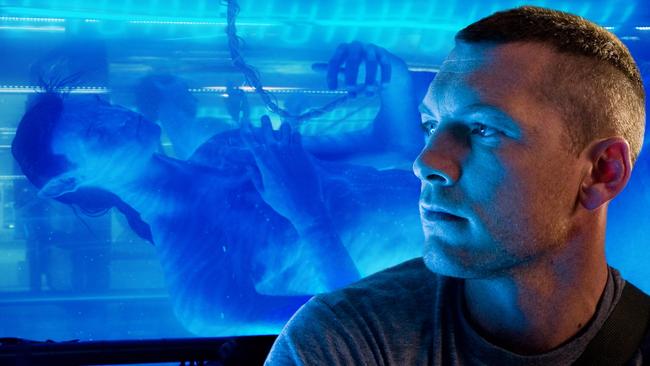Why we don’t care about James Cameron’s blockbuster Avatar 10 years on
Ten years ago we all packed into cinemas to watch the trailblazing film Avatar, but a decade on it has failed to withstand the test of time. Here’s why.
Movies
Don't miss out on the headlines from Movies. Followed categories will be added to My News.
It was 1994 and veteran director James Cameron had a vision so big not even technology could keep up.
The legendary Canadian filmmaker would eventually bring that vision to life in 2009 with Avatar, which until this year was the highest grossing film of all time, winning a slew of Academy Awards and revolutionising technology that had never before been seen in film.
But a decade on and nobody could really give two hoots about Avatar, let alone its four planned sequels.
How could a movie that made $US2.87 billion fade so rapidly from our memory? We investigate.
In the early ’90s, Cameron had written an 80-page summary for his ultimate passion project, Avatar, with ambitions to begin production after he finished Titanic in 1997 (which as we know went on to break its own records).
Cameron, who was 40, needed $US100 million to make Avatar – an astronomical budget at the time. He envisioned his alien characters “who appear to be real but do not exist in the physical world”.

Computer-generated imagery in film dated back to the ’70s but it was a far cry from what it is today and not even close to what Cameron would need to make the trailblazing movie he’d been dreaming of since he was in high school.
Cameron was forced to shelve Avatar and bide his time as technology advanced while also engineering it himself over eight years until his time finally came in 2006.
Naturally, the process was lengthy, with several delays and budget issues before filming began in 2007 in LA and New Zealand.
Cameron described the film as a hybrid with a full live-action shoot in combination with computer-generated characters and live environments. “Ideally at the end of the day the audience has no idea which they’re looking at,” Cameron said at the time.
While a lot of the hype for Avatar was around the 3D experience, Cameron also pioneered significant CGI advancements, particularly in facial performance capture, with the help of visual effects studio Weta Digital.
“It’s funny that the press has latched on to the 3D thing for Avatar,” Cameron said after it came out. “Because in a way 3D was the least of Avatar for me. We spent two years in R&D (research and development) to develop the facial capture, the CGI. For me this was the big thing.”

But 3D technology and facial capture were just the surface layer of this comprehensive production.
Cameron insisted every plant, tree and speck be rendered one by one. To put the enormity of this task into perspective, a single plant in Pandora comprised a million CG polygons, whereas Gollum in Lord of the Rings was 50.
This technology alone made Avatar – which ended up costing $237 million to make – worthy of the hype. And paired with the marketing muscle of 20th Century Fox, it was destined to be a hit.
And succeed it did. Avatar, starring Australian actor Sam Worthington and now streaming on Disney+, crossed the $1 billion mark 19 days after it was released.
It became the first film to gross $2 billion, surpassing Titanic to become the highest grossing film of all time 41 days after its release, a title it held for 10 years until Avengers: Endgame overtook it this year.
Get a 10 day free trial*. Stream Foxtel Now

As expected, it was praised for its visually breathtaking cinematography and impressive 3D that for a change didn’t look cheap or gimmicky.
But after that initial excitement died down, Avatar lost its sheen in a big way, and it was not just because the novelty of 3D wore off quickly.
Its lacklustre story couldn’t carry it into the pop culture history books. Set in the mid-22nd century, it shows humans colonising Pandora – a habitable moon of a gas giant that threatens to wipe out the local tribe Na’vi. It drew unsavoury comparisons to FernGully and Dances With Wolves. Eek.
When you think of cult favourite money-makers like Titanic, Star Wars, Harry Potter, Jurassic Park and ET, to name a few, you instantly think of famous lines, imagery and music.
There’s probably not one line you remember from Avatar or any memorable music for that matter.
Despite this, Avatar was still a giant financial and technological success and is no doubt the crowning jewel on Cameron’s resume.
Even if it was just Pocahontas in 3D.
Originally published as Why we don’t care about James Cameron’s blockbuster Avatar 10 years on

